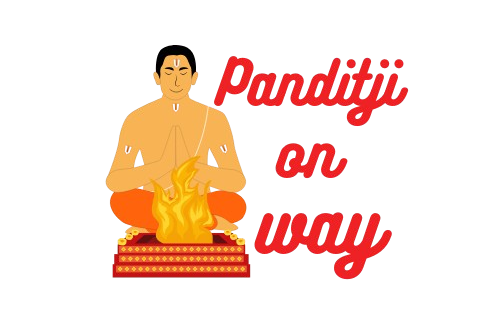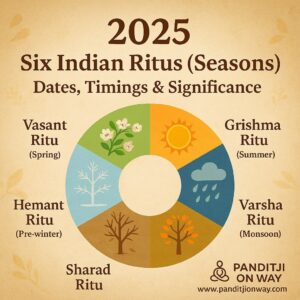Jainism and Buddhism: The Undivided Hindu Family
Jainism and Buddhism: The Undivided Hindu Family – two ancient spiritual paths originating from the Indian subcontinent, are often categorized as separate religions. Yet, their origins, philosophies, and cultural expressions are deeply intertwined with Sanatana Dharma, commonly referred to as Hinduism. Far from being foreign or antagonistic, Jainism and Buddhism can be viewed as spiritual siblings—branches of the same ancient dharmic tree that nourished India’s civilization.
This blog explores the historical, philosophical, and cultural connections between these three traditions, examining the influential roles of Pushyamitra Shunga, Jain Acharyas, and Adi Shankaracharya in shaping the Indian religious landscape.
Jainism and Buddhism: Reform Movements Within Hinduism
Emerging in the 6th century BCE, both Jainism and Buddhism arose as reformist responses to the ritualistic rigidity and social stratification (like caste divisions) present in Vedic society. While they critiqued and departed from certain Brahmanical practices, they preserved and reinterpreted core Hindu concepts like karma, rebirth, moksha, and dharma.
Rather than being wholly separate religions, these traditions can be seen as parallel spiritual journeys aimed at the same ultimate goal—liberation from the cycle of birth and death (samsara).
1. Jainism: The Eternal Dharma with Roots in Vedic Thought
Jainism, revived and systematized by Lord Mahavira, the 24th Tirthankara, upholds an ancient tradition believed by many scholars to predate the Vedic period itself. However, its spiritual vocabulary and philosophical essence closely align with Hindu metaphysics.
Core Features of Jainism:
- Ahimsa (Non-violence): While also central to Hinduism, Jainism adopts it to the most extreme degree, influencing even daily lifestyle choices like eating, walking, and speaking.
- Karma and Rebirth: Jainism interprets karma as a physical substance that clings to the soul, a notion echoed in Hindu metaphysics with a different lens.
- Tapas (Austerity): Jain asceticism mirrors Hindu practices of yoga, sannyasa, and tapasya.
Prominent Jain Acharyas such as Acharya Kundakunda, Acharya Umasvati, and Acharya Hemachandra engaged in rich intellectual dialogue with Hindu thinkers. Their works, composed in Prakrit and Sanskrit, are part of India’s shared philosophical heritage.
2. Buddhism: The Noble Middle Path Rooted in Dharmic Wisdom
Gautama Buddha, born as Siddhartha Gautama, was raised in a Kshatriya Hindu family and received teachings in Sankhya and Upanishadic philosophy before formulating his own path. Buddhism critiques the caste system and ritual excesses, yet preserves several foundational concepts from the Vedic tradition.
Core Features of Buddhism:
- Dharma: Though redefined, the moral and cosmic law remains central.
- Reincarnation and Karma: Buddhist samsara echoes Hindu beliefs, albeit without a permanent soul (anatman).
- Meditation (Dhyana): A technique also found in Patanjali’s Yoga Sutras.
Buddhism’s global reach can be credited to Emperor Ashoka, but its decline in India is often misattributed to persecution. In reality, it faded due to a shift in patronage, integration with Hindu Bhakti traditions, and intellectual absorption by Hindu scholars.
Pushyamitra Shunga: Protector of Vedic Revival or Persecutor?
Pushyamitra Shunga (185–149 BCE), the founder of the Shunga dynasty, is frequently painted in stark contrast to Buddhist ideals. Some Buddhist chronicles accuse him of violence against their community. However, modern historians present a more nuanced picture:
- No concrete archaeological evidence proves large-scale Buddhist persecution.
- His reign coincided with the resurgence of Vedic rituals and Sanskrit scholarship.
- There is evidence that Buddhist and Hindu institutions coexisted during and after his rule.
Rather than a religious crusader, Pushyamitra likely represented a political and cultural shift back to Brahmanical orthodoxy, coinciding with the decline of Mauryan patronage.
Adi Shankaracharya: The Spiritual Unifier of Dharma
In the 8th century CE, Adi Shankaracharya emerged as a towering intellectual and spiritual figure who revived Hinduism in the face of competing ideologies, including Buddhism.
His Contributions:
- Advaita Vedanta: A non-dualistic school that integrated Buddhist logic (like momentariness and emptiness) into Vedic ontology without rejecting the authority of the Vedas.
- Matha System: Shankaracharya founded four monastic centers (mathas) across India to preserve and disseminate spiritual knowledge.
- Debates with Buddhists: Through respectful shastrartha (scriptural debates), he absorbed Buddhist reasoning while reasserting Vedic supremacy.
His life mission was not to destroy Buddhism or Jainism, but to harmonize and reaffirm the essence of Sanatana Dharma in an era of fragmentation.
Shared Spiritual DNA: Why Jainism and Buddhism Belong to the Hindu Family
Despite their distinctions, Jainism, Buddhism, and Hinduism represent a shared dharmic civilization with common values and concepts. This spiritual kinship is not just theoretical but evident in their interconnected practices, texts, and philosophies.
Shared Elements:
- Ahimsa, Satya (Truth), and Aparigraha (Non-possessiveness) are emphasized in all.
- Rebirth, Karma, Moksha, and Meditation appear in varied forms across the three.
- Philosophical Synergy: Buddhist and Jain elements can be found in Hindu epics like the Mahabharata and Ramayana.
- Cultural Coexistence: Throughout Indian history, temples, stupas, and Jain derasars stood side by side, symbolizing pluralism, not rivalry.
Frequently Asked Questions (FAQs)
Q1. Are Jainism and Buddhism part of Hinduism?
While Jainism and Buddhism are often considered separate religions, they both originated from the same dharmic culture as Hinduism. Many scholars and spiritual leaders see them as reformist or parallel paths within the broader framework of Sanatana Dharma. They share core concepts like karma, rebirth, moksha, and ahimsa, making them spiritually interconnected traditions rather than entirely separate religions.
Q2. What is the relationship between Hinduism, Buddhism, and Jainism?
The relationship between Hinduism, Buddhism, and Jainism is rooted in shared philosophies and cultural evolution. All three emerged in ancient India and emphasize spiritual liberation, non-violence, and meditative discipline. They evolved through mutual dialogue, with thinkers like Adi Shankaracharya and Jain Acharyas influencing and integrating ideas across these traditions.
Q3. Did Buddhism and Jainism emerge as reform movements within Hinduism?
Yes. Both Buddhism and Jainism emerged in the 6th century BCE as reform movements challenging the ritualistic and caste-based practices of Vedic society. However, rather than rejecting Vedic ideas entirely, they reinterpreted concepts like dharma, karma, and moksha, offering alternative spiritual paths grounded in ethical living and inner realization.
Q4. Why is Jainism considered older than Buddhism?
Jainism, through the lineage of 24 Tirthankaras, especially Lord Mahavira, claims ancient origins that may predate the Vedic period. Many scholars believe Jain traditions go back to the Indus Valley Civilization. In contrast, Buddhism was founded by Gautama Buddha in the 6th century BCE. Historically, Jainism is often viewed as an eternal dharma (Sanatana Dharma) rather than a new religion.
Q5. Was Pushyamitra Shunga really against Buddhism?
Pushyamitra Shunga, the founder of the Shunga Dynasty, is often alleged in Buddhist texts to have persecuted Buddhists. However, modern historians argue there’s no solid archaeological evidence of large-scale persecution. His reign is better understood as a revival of Vedic traditions, not necessarily as a religious suppression of Buddhism.
Q6. What was Adi Shankaracharya’s role in relation to Buddhism and Jainism?
Adi Shankaracharya, a great Hindu philosopher of the 8th century CE, played a major role in the revival of Hinduism through his Advaita Vedanta philosophy. While he engaged in debates with Buddhists and Jains, his goal was not destruction but synthesis. He integrated Buddhist logic into Vedantic thought, harmonizing differences under the banner of Sanatana Dharma.
Q7. Do Hinduism, Jainism, and Buddhism all believe in karma and rebirth?
Yes. All three traditions believe in karma (the law of cause and effect) and rebirth (the cycle of reincarnation or samsara). Though their interpretations vary—Buddhism denies a permanent soul (anatman), Jainism sees karma as a material substance, and Hinduism supports the Atman-Brahman theory—the core principle of cyclic existence remains shared.
Q8. Can Jain, Buddhist, and Hindu philosophies coexist?
Absolutely. India’s spiritual landscape has always supported pluralism. Jain temples (derasars), Buddhist stupas, and Hindu mandirs have historically existed side by side. These philosophies reflect a shared spiritual DNA, rooted in the Indian subcontinent’s inclusive dharmic worldview.
Q9. What are the common values shared by Jainism, Buddhism, and Hinduism?
Key shared values include:
- Ahimsa (non-violence)
- Satya (truthfulness)
- Aparigraha (non-possessiveness)
- Meditation (dhyana)
- Karma and Moksha
- Compassion and ethical living
These universal dharmic values form the backbone of India’s spiritual ethos.
Q10. Why are Jainism and Buddhism considered part of the Dharmic family?
Jainism and Buddhism are part of the Dharmic family because they originate from and align with the spiritual and philosophical traditions of India. They share terminology, cosmology, and soteriology with Hinduism, contributing to a unified but diverse spiritual heritage of Bharat.
Conclusion: One Dharmic Family, Many Paths
To understand Jainism and Buddhism as merely separate religions is to miss the organic evolution of Indian spirituality. These traditions are not outliers but integral threads in the rich tapestry of Hindu dharma. The dynamic interplay between them, led by figures like Pushyamitra Shunga, Jain Acharyas, and Adi Shankaracharya, illustrates a legacy of dialogue, reform, and spiritual unity.
India’s dharmic traditions have never been about dogma but about diverse paths to the same truth—be it through Jain tapasya, Buddhist mindfulness, or Hindu devotion. By embracing their shared roots, we uphold the inclusive soul of Bharat.
Follow Us on Pinterest
For more spiritual content, dharmic insights, and puja information, follow us on Pinterest.
Read More:
👉 Why the West Is Now Accepting Indian Astrology
Explore how Indian astrological wisdom is gaining traction across Western cultures and what this means for the global spiritual awakening.



